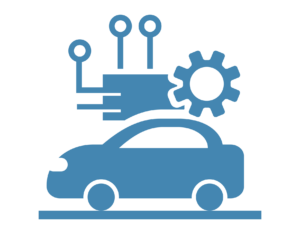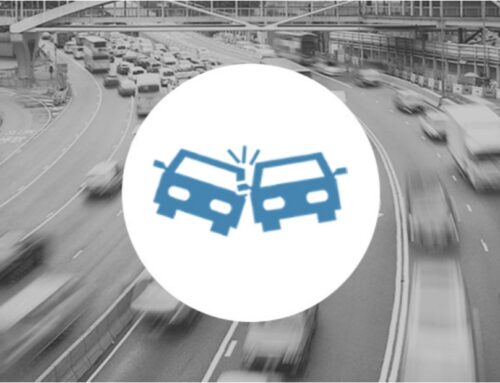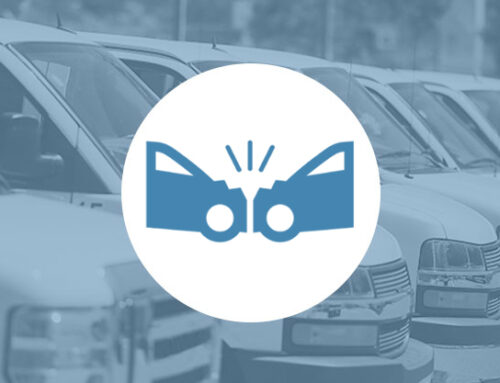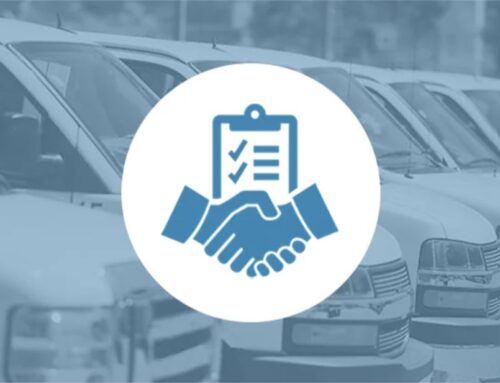If you’re new to fleet management, you’ve probably hear d telematics get tossed around in your research. And while the industry has some great advice about how to integrate telematics or how to interpret the data that comes from monitoring the fleet, there aren’t as many articles that discuss the basics.
d telematics get tossed around in your research. And while the industry has some great advice about how to integrate telematics or how to interpret the data that comes from monitoring the fleet, there aren’t as many articles that discuss the basics.
So let’s do that now!

What is telematics?
A telematics device is like a GPS device, but with wireless data.
So in addition to mapping your vehicle’s location and getting route directions, the device can also send, receive, monitor, calculate and store information.
For example, telematics can monitor the vehicle’s behavior—such as acceleration rates, speed, braking, fuel consumption—communicate with other devices, store billing data, send maintenance or collision alerts, etc. Drivers can even send texts or make calls from the device.
What do the mechanics of telematics entail?
Two things: telematics needs hardware and software to operate.
The hardware is installed in the vehicle—usually the dashboard—and is needed to gather and communicate data. Software is synced with the device and is needed to retrieve the information. The fleet manager logs into an app (or a secure online portal) and gets immediate access to data.
What’s the biggest benefit of telematics?
There are many benefits. The biggest one depends on the type of fleet you have. Here are some common benefits:
- Convenience. Fleet managers can access reports any time and from any device connected to the Internet. You don’t need to wait for drivers to self-report.
- Uptime. Tracking vehicle behavior means you can schedule maintenance when the vehicle needs it—as opposed to a generic timeline. Monitoring can also help you avoid unforeseen repairs and breakdowns.
- Accuracy. Get a verified, accurate cost per mile.
- Insurance. Companies have been working out a way to lower insurance payments by proving good driving behavior through telematics.
- Cost savings. With data on how and where a vehicle is driven, fleet managers can find ways to save money. Sometimes savings are as simple as choosing more direct routes, or monitoring and reducing idle times.
- Safety. Data can help find and prevent safety risks. Managers can flag drivers who tend to speed, brake too harshly or don’t wear seatbelts.
- Improved customer experience. Make frequent deliveries? Telematics helps you alert customers to their package status. Operate service vehicles? Telematics helps managers dispatch the closest vehicle in the case of a service emergency.
How do drivers feel about telematics? Is it like Big Brother?
Although telematics has raised concerns from drivers who feel they are being watched, most fleet managers aren’t using the technology to spy.
If a telematics program is rolled out properly, suspicion can be avoided. Sharing metrics with drivers can be a positive coaching tool, and many drivers appreciate the performance feedback because it can be fairly measured against their peers. That said, if drivers are driving unsafely or they are frequently wasting company time, telematics certainly has the capacity to track that behavior. Telematics programs are only as good as the people and management behind the technology.
How much does telematics cost?
It depends on the program you choose and the specs you’re looking for. Some systems are very affordable; others are a more significant investment.
Providers price systems differently, but it is typical that you would pay an installation fee, as well as a monthly subscription fee (often between $30 and $65 per month per vehicle—again depending on the technological capabilities you want).
Is telematics the new normal? Do I have to use it in my fleet?
We have clients who have telematics and those who don’t. Our instinct tells us that, in time, most fleets will incorporate this technology into their business, but adoption is still underway. In the meantime, you have to choose what’s best for your business.





